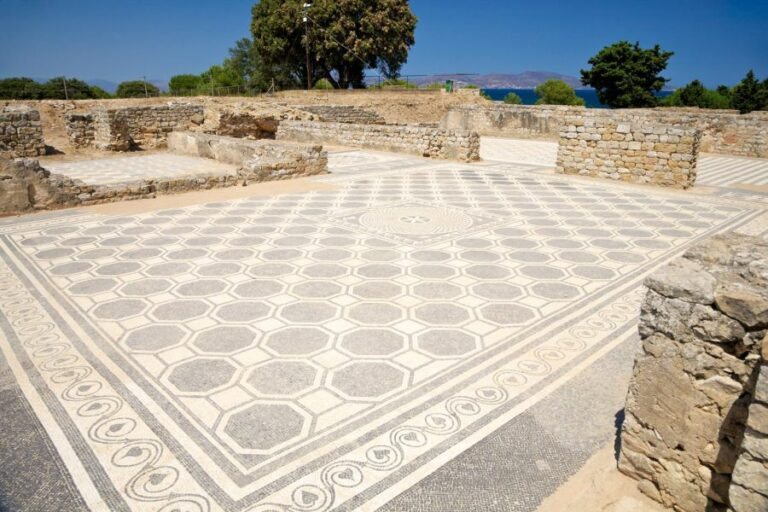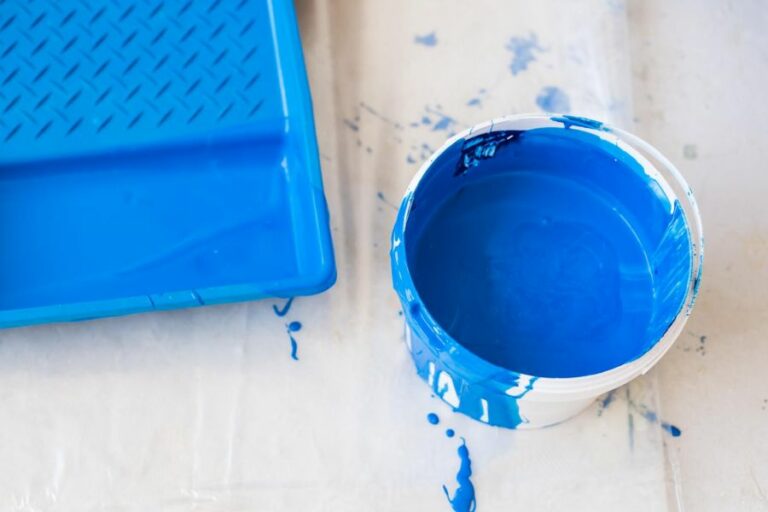Outdoor Metal Gate Paint Colors, 25 Things You Should Know
The decision to choose the perfect color for your outdoor metal gate can be a bit overwhelming, given the variety of options available. However, don’t worry, because we have the key insights to help you select the best paint colors that not only complement your home’s exterior but also provide durability and protection against harsh weather conditions.
Outdoor metal gate paint colors:
Choose outdoor metal gate paint colors that enhance your property’s curb appeal by selecting complementary colors, a monochromatic scheme, or bold accent colors. Consider using oil-based or direct-to-metal (DTM) paints for durability and rust protection. Additionally, take into account weather conditions, lighting, and personal taste when selecting colors.

Looking for the perfect outdoor metal gate paint color to elevate your curb appeal? Look no further! We’ve got you covered with the trendiest shades, expert tips, and stylish inspiration to make your entrance a showstopper. Let’s dive into the world of outdoor metal gate colors! Read on!
Contents
- 1 Exterior Metal Gate Paint Color Options
- 2 Which Paint Color is Most Suitable for Metal Gates?
- 3 What Are the Most Suitable Colors for Painting a Garden Gate?
- 4 What is the Professional Technique for Painting an Outdoor Metal Gate?
- 5 What are the different colors of wrought iron gates?
Exterior Metal Gate Paint Color Options
Selecting the perfect paint color for your outdoor metal gate is a crucial decision that can transform the look and feel of your property.
• The Role of Color in Curb Appeal
The color of your outdoor metal gate has a significant impact on your property’s curb appeal. It can either complement your home and landscaping or create a jarring effect that detracts from the overall aesthetic.
Therefore, it is essential to choose a color that enhances the appearance of your property and matches the existing color scheme.
– Complementary Colors
One popular approach to selecting outdoor metal gate paint colors is to choose a complementary color that blends with your home’s exterior. Complementary colors are located opposite each other on the color wheel and create a harmonious effect when paired together.
For example, if your home features red brick or earth-toned siding, a green or blue gate would create a lovely contrast.
– Monochromatic Color Scheme
Another option is to opt for a monochromatic color scheme, where the gate color matches the color of your home’s exterior. This creates a cohesive and visually appealing look, as the gate appears to be an extension of the home itself.
– Accent Colors
If you would like your outdoor metal gate to stand out as a focal point, consider selecting a bold accent color that contrasts with the rest of your property’s color scheme. This could be a bright, vivid hue or a deep, rich shade depending on your personal preference and the desired impact.
Choosing the right color combinations is crucial for creating a harmonious and visually appealing property.
• Types of Paint for Outdoor Metal Gates
Not all paints are created equal, and the type of paint you choose for your outdoor metal gate will influence its appearance and durability. There are three main types of paint suitable for outdoor metal gates:
– Oil-Based Paints
- Long-lasting and durable
- Excellent adhesion to metal surfaces
- Slow drying, which allows for a smooth, even finish
– Water-Based Paints
- Fast drying and easier to clean up
- Low levels of toxic emissions
- May not adhere as well to metal surfaces as oil-based paints
– Direct-to-Metal (DTM) Paints
- Specifically designed for use on metal surfaces
- Excellent adhesion and rust prevention
- Available in both oil-based and water-based formulas
I recommend using oil-based or DTM paints for outdoor metal gates, as they provide a durable and long-lasting finish that will withstand the elements and resist rust.
• Preparing the Metal Gate for Painting
Proper preparation is critical for ensuring that your chosen paint adheres well to the metal gate and lasts for years to come. The following steps will help you prepare your gate for a smooth and successful paint job:
- Clean the gate thoroughly, removing any dirt, rust, and peeling paint.
- Sand the gate to create a smooth and even surface.
- Apply a rust-inhibitive primer to the metal gate for increased paint adhesion and rust protection.
- Allow the primer to dry completely before applying the paint.
• How to Apply Outdoor Metal Gate Paint
Now that you have chosen the perfect color and prepared the gate, it’s time to paint:
- Stir the paint well to ensure it has a smooth, even consistency.
- Apply a thin, even coat of paint using a good-quality brush or roller.
- Allow the first coat to dry according to the manufacturer’s instructions.
- Apply additional coats as necessary, ensuring each coat is completely dry before proceeding.
For the best results, I recommend using a high-quality paintbrush or a paint roller specifically designed for use on metal surfaces.
• Additional Factors to Consider
When choosing outdoor metal gate paint colors, it’s essential to consider the effect that weather conditions, lighting, and personal taste can have on the final appearance.
- Weather Conditions: Harsh weather conditions such as rain, snow, and intense sun can cause paint to fade or peel over time. Select a durable, weather-resistant paint that will withstand your local climate. Lighting: The color of your gate might appear different in various lighting conditions. Make sure to view paint samples in natural outdoor lighting before making a decision.
- Personal Taste: Your outdoor metal gate should be an extension of your personal taste and style. Choose a color that you love, and that reflects your design preferences.
By following these helpful tips and expert recommendations, you can create a beautiful and visually appealing outdoor metal gate that enhances your property’s curb appeal and offers lasting protection against the elements.
Which Paint Color is Most Suitable for Metal Gates?
When it comes to painting metal gates, there are several factors that need to be carefully considered. Among those factors, choosing the right color of paint holds significant importance.
The right paint color can not only enhance the visual appeal of your metal gate but also provide an added layer of protection against external factors, such as weather and corrosion.
• Factors to Consider While Choosing the Paint Color
– Compatibility with Surroundings
The first factor to consider is the compatibility of the paint color with the surrounding area. It’s essential that the chosen color seamlessly blends in and complements the aesthetics of your property.
For instance, choose a color that aligns with the exterior walls of your home or matches the overall theme of your garden.
– Weather Conditions
It’s essential to select a paint color that can withstand harsh weather conditions, such as extreme heat, cold, and rain. In general, lighter colors tend to absorb less heat and are suitable for locations with intense sunlight.
Conversely, darker colors might be more durable in cooler climates – but ensure that the paint you select is designed specifically for outdoor use in your region.
– Visibility
In addition to aesthetic considerations, you should also think about the visibility of your metal gate. Bright and bold colors may make the gate more noticeable, which could deter trespassers from attempting to enter your property.
On the other hand, a more subdued color might blend in better with the surroundings and not draw unnecessary attention.
– Longevity and Maintenance
Another factor to keep in mind is the longevity of the paint color. Some colors may be more prone to fading or chipping over time, which could result in a worn-out look.
Choose high-quality paint from a reputable manufacturer that offers a warranty, as this can ensure better durability and lower maintenance costs in the long run.
• Recommended Paint Colors for Metal Gates
– Classic Black
One of the most timeless and versatile color options for metal gates is classic black. This dark hue offers excellent durability, as it hides dirt and imperfections effectively. Moreover, black paint is less likely to show signs of weathering or rust, ensuring a consistently polished look.
– Dark Green
Dark green is another popular choice for metal gate paints, especially for those looking to create a more natural, harmonious appearance. A dark green finish can seamlessly blend with garden foliage, enhancing the overall aesthetic of your outdoor space.
– Dark Blue
A deep shade of blue can add a touch of elegance and sophistication to your metal gate. Similar to dark green, dark blue paint is also less likely to reveal dirt or scratches, ensuring a pristine appearance throughout the year.
– Earthy Tones
Earthy colors like browns, tans, and greys are ideal for those looking to evoke natural aesthetics and blend effortlessly with their surroundings. These colors not only create a sense of warmth and coziness but also effectively disguise signs of weathering.
• Best Types of Paint for Metal Gates
Selecting the right paint type is as crucial as choosing the right color. Here are some top-notch paint options for metal gates:
– Epoxy-based Paints
Epoxy-based paints are renowned for their excellent durability and resistance to various external factors. They are ideal for metal gate applications, as they create a tough and hard-wearing protective layer on the gate’s surface.
The US Environmental Protection Agency provides guidelines for choosing eco-friendly epoxy coatings that adhere to strict quality standards.
– Alkyd-based Paints
Alkyd-based paints are another excellent option to consider for metal gates. They provide superior adhesion and protection against rust, corrosion, and extreme weather conditions. Alkyd-based paints work exceptionally well on metal surfaces and offer high-quality, long-lasting results.
– Acrylic Latex Paints
For those seeking a more environment-friendly alternative, acrylic latex paints are an excellent choice. These water-based paints contain lower levels of harmful volatile organic compounds (VOCs), ensuring better air quality and lower environmental impact.
Moreover, they provide excellent adhesion, durability, and weather resistance, making them apt for metal gate applications.
In conclusion, choosing the right color paint for your metal gate involves considering various factors such as compatibility with surroundings, weather conditions, visibility, and maintenance. Classic black, dark green, dark blue and earthy tones are some of the most recommended paint colors for metal gates.
Additionally, selecting a high-quality paint type, like epoxy-based, alkyd-based, or acrylic latex paints, can ensure better longevity and protection for your metal gate.
With these considerations in mind, you can achieve stunning results that not only enhance your property’s aesthetics but also preserve your metal gate’s condition for years to come.
Color | Advantages | Considerations |
|---|---|---|
Black | Classic choice, easily matches most exteriors, hides dirt and deterioration well | Can absorb heat, potential issue in hot climates |
White | Bright and clean appearance, reflects heat | Shows dirt and wear more easily |
Green | Blends in with natural surroundings | May not stand out as much as other colors |
Blue | Adds a pop of color, can create a nautical or coastal vibe | May clash with certain exterior color schemes |
Red | Bold statement color, can add visual interest to the entrance | May fade faster under direct sunlight, can be overpowering |
What Are the Most Suitable Colors for Painting a Garden Gate?
A beautifully painted gate can significantly enhance the kerb appeal of any property. However, choosing the perfect color for your gate can be a challenging task, especially with the multitude of shades available in the market.
• Classic Black and White
Black and white are timeless colors that never go out of style. They are popular choices for gates as they exude elegance and sophistication while also being relatively low-maintenance.
Reasons to Choose Black:
- Black is an excellent choice for wrought iron or metal gates, as it provides a sharp contrast against the surrounding greenery and highlights the intricate designs.
- A black gate can seamlessly blend with any architectural style, making it a versatile option.
- It is also a forgiving color, easily hiding dirt and stains, and ideal for areas with high traffic or constant exposure to elements.
Reasons to Choose White:
- A white gate can create a bright, welcoming entrance to your home, especially when paired with lush green landscapes or vibrant flowers.
- White wooden gates, especially picket fence gates, evoke a sense of classic charm and can add character to your property.
- Similar to black, white is a versatile color that works well with different architectural styles, but be prepared for more frequent cleaning as dirt may show up easily.
• Earthy Tones
Earthy tones such as browns, beiges, and tans can create a natural and harmonious look for your gate while complementing the surrounding environment. Here are some top earthy colors to consider:
Rich Brown:
- A deep, rich brown color can add warmth and elegance to your property entrance, making your gate stand out without being overly conspicuous.
- Brown gates work well with brick or stone exteriors, creating a seamless connection between the gate and the house.
- Maintenance-wise, brown does a pretty good job of hiding dirt and dust, meaning less frequent cleaning.
Beige or Taupe:
- A beige or taupe gate offers a subtle and elegant appearance, similar to white but without the high maintenance requirement.
- These softer earthy tones work well with a range of exterior colors, including cream, off-white, and even pastels.
- Another advantage of using beige or taupe for your gate is that they don’t show dirt or streaks as easily as lighter colors, keeping your entrance clean and presentable.
• Bold and Vibrant Colors
For those who want to make a statement, bold and vibrant colors can be an exciting option to consider for your gate. Here are some eye-catching hues to turn heads:
Red:
- A classic red gate can evoke a sense of excitement and energy, making it a popular choice for modern homes.
- The bold hue works beautifully against a neutral backdrop, such as a gray or beige exterior, or natural surroundings like lush greenery or a cobblestone driveway.
- The color red is also known to symbolize protection and safety in some cultures, a consideration for those who want to create a powerful first impression. (Source: Color Symbolism)
Blue:
- Blue gates can bring a refreshing and tranquil feeling to the entrance of your property.
- From soft sky blues to rich navy shades, blue can complement a range of exterior styles and surroundings.
- Keep in mind that darker blues can require more maintenance due to the visibility of dirt and grime.
Green:
- Green gates can create a harmonious connection with the natural environment, especially if your property is surrounded by trees or expansive lawns.
- Like blue, green comes in a plethora of shades, from calming sage and olive hues to vibrant emerald tones.
- Having a green gate can also evoke a sense of growth and renewal, making it an excellent option for those who care about sustainability and the environment.
• Constructing a Color Scheme
One effective way to create a cohesive look for your home exterior is by using color schemes.
A tried-and-true method in creating an aesthetically pleasing color scheme is considering the 60-30-10 rule, which suggests using three different shades in varying amounts: 60% for the dominant color, 30% for the secondary color, and 10% for the accent color.
By applying this rule to your gate color selection, you can effectively tie it in with your home exterior and other elements. For example, if your home is painted in shades of gray with white trims (60% gray, 30% white), you could opt for a bold red gate (10% accent) to create an eye-catching contrast.
• Conclusion
Choosing the best color for your gate is a significant decision, as it can set the tone for the overall appearance of your property. Be sure to consider factors such as compatibility with your home’s style, the surrounding environment, and your personal preferences.
Classic choices like black and white, earthy tones, or bold and vibrant colors are all excellent options to create a stunning gate that enhances your property’s kerb appeal.
What is the Professional Technique for Painting an Outdoor Metal Gate?
In order to protect your outdoor metal gate from rust and wear, painting it is an essential part of proper maintenance.
• Choosing the Right Paint for Your Metal Gate
The first step in painting your outdoor metal gate is selecting the appropriate paint. This choice is crucial, as using the wrong type of paint can result in premature failure and an unattractive finish.
When choosing paint for your gate, look for products specifically formulated for metal surfaces and for outdoor use. These paints often contain rust inhibitors and UV stabilizers to prevent corrosion and degradation.
For example, you might consider using Rust-Oleum’s line of metal-specific paints, which offer long-lasting protection and a variety of colors and finishes.
• Prepping Your Metal Gate for Painting
1. Cleaning the Surface
Before applying the paint, it’s crucial to clean the metal gate thoroughly to ensure proper adhesion. First, remove any dirt, dust, and debris using a soft bristle brush or a vacuum cleaner with a brush attachment.
Next, wash the gate with warm soapy water, using a sponge or cloth to scrub any stubborn grime. Rinse thoroughly with clean water and allow the gate to dry completely before moving on to the next step.
2. Removing Rust and Old Paint
Inspect your gate for any areas of rust or flaking paint. To remove rust, you can use a wire brush or a coarse sandpaper (60 to 80 grit) to scrub away the rust. For larger areas of rust, consider using a power tool with a wire brush attachment, such as an angle grinder.
After the rust has been removed, sand the area with a finer sandpaper (120 to 180 grit) to smooth the surface.
For removing old paint, use a paint scraper or a putty knife to gently pry away any loose or flaking paint. Follow this with sanding the entire gate using a medium grit sandpaper (100 to 150 grit) to create a smooth surface for the new paint to adhere to.
– 3. Applying a Metal Primer
Once the gate is clean and sanded, apply a quality metal primer to further enhance paint adhesion and provide additional rust protection. Choose a primer that is compatible with the type of paint you will be using and follow the manufacturer’s instructions for application.
Allow the primer to dry completely, following the recommended drying time found on the product label. Once the primer is dry, lightly sand the surface with fine sandpaper (220 grit) to smooth any imperfections and promote better paint adhesion.
• Painting Your Metal Gate
1. Selecting the Proper Tools
For a professional finish, it’s important to use high-quality painting tools. A paint sprayer can offer the most uniform and attractive finish, but it may not be feasible for all users. Instead, consider using a combination of high-quality brushes and foam rollers to achieve a smooth, even coat.
Choose a brush with synthetic bristles made specifically for use with the type of paint you have selected. For large, flat areas, a foam roller can provide an even coat and help prevent visible brush strokes.
2. Applying the Paint
Before painting, stir the paint thoroughly and check the manufacturer’s recommendations for temperature and weather conditions. It’s best to paint the gate on a day with low humidity, moderate temperatures, and no rain.
Apply paint to your gate, working in small sections to ensure even coverage. Use a brush for areas with intricate patterns or detail and a foam roller for larger, flat surfaces. Keep a wet edge as you move along the gate to avoid lap marks.
It’s important to apply multiple thin coats of paint rather than a single, thick coat. Allow the paint to dry between each coat, following the recommended drying time on the paint label.
3. Finishing Touches
Once the final coat of paint has dried, inspect your gate for any touch-ups or areas where paint has been missed. Use a small brush to fix any imperfections, ensuring the gate is fully covered and protected.
Lastly, remember to regularly inspect your gate for any signs of rust or paint wear. Maintaining a properly painted outdoor metal gate can extend its lifespan and keep it looking attractive for years to come.
Step | Description |
|---|---|
1 | Remove any rust, peeling paint, or loose debris from the gate using a wire brush or sandpaper. |
2 | Wipe down the gate with a damp cloth to remove any dirt or dust, and allow it to dry completely. |
3 | Apply a rust-inhibiting primer to the gate using a paintbrush, paint roller, or spray can. Be sure to cover all surfaces and allow the primer to dry according to the manufacturer’s instructions. |
4 | Choose a high-quality exterior paint that is suitable for metal surfaces. Consider a paint that is formulated for metal and offers UV protection to slow down the fading process. |
5 | Apply the paint in thin, even coats using a paintbrush, paint roller, or spray can. Allow each coat to dry according to the manufacturer’s instructions before applying additional coats, if needed. |
6 | Once the paint is dry, inspect the gate for any touch-ups needed, then enjoy the refreshed look of your outdoor metal gate. |
What are the different colors of wrought iron gates?
When considering the addition of a wrought iron gate to your property, one of the many factors to take into account is the color. While wrought iron is known for its durability and classic appeal, understanding the range of available colors can help you select the perfect shade to enhance your home’s exterior.
– Traditional Colors for Wrought Iron Gates
The classic color choice for wrought iron gates is black, which remains a popular selection for its timeless appeal and versatility.
Black wrought iron gates can complement a wide range of architectural styles, from traditional to contemporary, and create a bold contrast against lighter-colored walls or landscaping.
Moreover, black is known for its ability to resist weathering and rust, making it a durable choice for outdoor installations.
Other Popular Dark Colors
Besides the traditional black, other dark shades can also work well for wrought iron gates. Rich browns, such as chocolate or espresso, can add a warm touch to your entrance, blending seamlessly with the surrounding natural environment.
Conversely, charcoal grey or deep navy blue can provide a more contemporary, yet still sophisticated, appearance.
– The Appeal of Light-Colored Wrought Iron Gates
Lighter shades can also make an impact in the realm of wrought iron gates. The use of lighter colors, such as white, soft gray, or beige, can create an elegant, airy feel and draw attention to the intricate craftsmanship of the gate.
These colors offer a striking contrast against darker backgrounds and can evoke a sense of classic refinement. One downside, however, is that lighter colors may require more frequent maintenance to keep up their appearance and combat the natural weathering process.
Metallic Finishes
Metallic finishes can be another captivating option for wrought iron gates, providing a brilliant shine that instantly elevates the gate’s overall style. Gold or bronze-toned finishes can emanate a sense of luxury and sophistication, while silver or chrome accents offer a sleek, modern touch.
Though these finishes can be breathtaking, it’s important to consider the durability and maintenance requirements of metallic finishes, as they may be more susceptible to scratching and tarnishing.
– The Benefit of Custom Colors
For homeowners looking to make a statement with their wrought iron gate, custom colors offer nearly limitless possibilities. From bold reds and blues to subtle pastels, the spectrum of available hues ensures that every individual can find the perfect shade for their taste and style.
Additionally, custom color finishes can be an opportunity to experiment with unique patterns or multi-tonal applications, allowing you to create a one-of-a-kind gate design.
When considering custom colors, be sure to consult with an experienced manufacturer or installer, as the specific maintenance and durability factors may vary depending on the chosen shade.
– The Importance of Proper Maintenance
Regardless of the chosen color, proper maintenance is essential for preserving the beauty and integrity of your wrought iron gate. Regularly inspecting the gate for signs of wear (such as chipping or fading) is crucial, as well as cleaning off any accumulated dirt or debris.
For gates with painted or powder-coated finishes, regular touch-ups can help maintain the vibrant appearance and protect against rust or corrosion. To learn about the specific maintenance needs for your chosen color or finish, consult with your manufacturer or installer.
• Final Thoughts on Wrought Iron Gate Colors
Ultimately, the color of your wrought iron gate is a personal choice based on your desired aesthetic, the architectural style of your property, and the surrounding environment.
With such a wide range of hues to choose from, you can surely find the ideal shade that speaks to your unique tastes and complements your home’s exterior.
By understanding the advantages and maintenance requirements of various color options, you can make an informed decision that not only enhances your property’s curb appeal but also ensures the long-lasting beauty and durability of your wrought iron gate.







